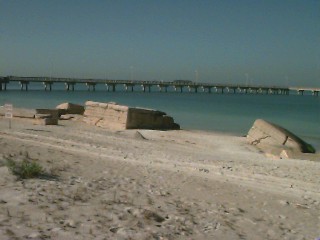
From records at Groton, we present the following family for Aaron and Lucy Bigelow:
16215.1 Jonathan, b 13 Sep 1781 Groton.
16215.2 Aaron, b 17 Aug 1783 Groton; an officer (Lt.) in the regular U.S. Army, he was killed at the Battle of Lundy's Lane on 25 July 1814; unmarried. (see below)
16215.3 Mary, b 7 Aug 1785 Groton; perhaps died young, (see 1790 census).
16215.4 Miriam, bapt 3 Jun 1787 Groton; d ____ ; m 29 May 1817 William Longley 3rd.
Sources:
The Bigelow Family Genealogy, Volume I, page 155-156;
Howe, Bigelow Family of America;
censuses 1790, 1800;
town records Groton, MA;
military record Aaron Bigelow, jr;
Forge: The Bigelow Society Quarterly, vol.11, p.81, "Early Obits."
Note:
AnneHall@aol.com wrote:
Hello --
I'm a freelance writer doing some research on Battery Bigelow, a part of
historic Fort De Soto in Pinellas County. This battery, now crumbling
into
the Gulf of Mexico, was named for Lt. Aaron Bigelow who died in the Battle
of Lundy's Lane in 1814. I have been searching for more information about
him, and came across your family reunion, going on right now!
I'm wondering: Do you have any information on this young soldier,
from the
21st US Infantry?
Many, many thanks
Anne L. Hall

More:
HELLO and thanks to you and Larry Baxter . . .
I'm including a copy of the article that came out today here in St. Pete.
I would have liked to have found Aaron Bigelow's service record, but couldn't
get it before deadline. Had to guess a bit at his role in the battle. This
has been lots of fun . . . the highlight for me was finding the Bigelow
reunion going on at the peak of my search. Many thanks for your help. If
you want a paper copy of this article, with photos, I'll be happy to send
it on.— Annie
Fort De Soto’s Crumbling Tribute
By Anne L. Hall
Waves smash against Battery Bigelow now — anglers rest
their tackle boxes atop its heavy walls. This ragged section of Fort De
Soto, built 100 years ago to defend Tampa Bay against Spanish attack, was
toppled by storms and erosion instead of battle.
Battery Bigelow once supported two Driggs Seabury rapid-fire
guns, but they were only fired in tests and training exercises, a
history brochure from the Pinellas County Parks Department tells us. The
brochure also tells us the battery was named in honor of 1st Lt. Aaron Bigelow
of the 21st U.S. Infantry, who was killed at the Battle of Lundy's Lane in
Ontario during the War of 1812.
But who was Aaron Bigelow that he should be remembered
here?
The Battle of Lundy’s Lane was a vicious, six-hour
battle fought near Niagara Falls, through heat, smoke and the darkness of
night. It was the
bloodiest battle of the War of 1812.
According to census records, Aaron Bigelow was born
on Aug. 17, 1783, in Groton, Mass., and was a lieutenant in the regular
U.S. Army. He was unmarried when he was killed on July 25, 1814, a few weeks
before his 31st birthday.
His father, Aaron Bigelow Sr, had been a private
in the Continental Army and was on the Valley Forge muster rolls for December
of 1777 to May of 1778. On the night of the Battle of Lundy’s Lane, July
25, 1814, Aaron Bigelow and the 21st Infantry from Massachusetts,
led by Col. James Miller, were given an impossible task.
THE BATTLE OF LUNDY’S LANE
British forces were massed at the top of a hill beside Lundy’s Lane
where there was a red frame Presbyterian church with its small cemetery.
The
British positioned their seven brass cannons in the cemetery and aimed
them downhill.
At 6 p.m., U.S. Army General Winfield Scott ordered his forces
to attack. Armed only with muskets, Scott’s troops charged through waist-high
crops and over chest-high split-rail fences. They raced uphill straight
into the cannon fire.
When Major-General Jacob Brown arrived with American reinforcements
— General Eleazar Ripley's fresh troops and Colonel James Miller with the
21st Infantry Regiment — the officers were taken aback at the carnage and
decided the guns had to be taken.
At 8:30 p.m., Scott’s devastated brigade was ordered into reserve,
and Ripley's brigade was ordered to divert the British gunfire on the hill
while
Miller led the 21st Infantry Regiment in capturing the blazing cannons.
The action was furious. Horse drawn artillery led the charge
uphill: Riders were thrown off their horses, and many of the horses were
killed. Miller led his men under shrubbery to the shelter of a rail
fence within 20 yards of the British. They could see only a few yards
away. He ordered his men to lean on the fence, take a breath, aim carefully
and fire.
One volley surprised and overcame the British gunners, and the
Americans took possession of the cannons.
But the British soldiers surged forward with fixed bayonets,
and the armies began hand-to hand combat. Musket exchanges flashing only
yards apart caused heavy casualties.
By now it was10 p.m. The struggle to keep possession of the guns
would last another two hours in the oppressive summer heat. The smoke of
artillery fire clung to the air. The men could only see by musket flash
and rockets. They fought over fences and graves. In the din of gunfire
and darkness, each side inadvertently fired upon its own troops. They fought
to a standstill.
Then at 11:30, the British pushed once more for the captured guns.
Scott moved his brigade back out into the line of fire and began attacking
the British in column, not line, with disastrous results. As Scott’s men
pierced one of the British front lines, Ripley’s men fired on them, not
able to distinguish American from British silhouettes. As it neared midnight,
both ammunition and supplies were critically low. Scott, severely injured
when a bullet tore apart his shoulder, was carried to the rear of the battlefield.
Seven out of 10 of the regimental commanders
had been killed or wounded, and little order was left among the remaining
American men.
After midnight, the U.S. forces retreated. Their supply lines
were overextended, and they had lost too many men to hold the hilltop. Both
sides were exhausted and had suffered heavy losses. The Americans took one
British gun, but left the others to the British. The American forces retreated
to their camp at Chippawa, taking their wounded with them. The next day
the British took charge of disposing of the hundreds bodies covering the
battlefield. In the July heat they piled British and American soldiers and
the horses together and burned them on a massive funeral pyre.
Altogether 878 British and Canadian soldiers, and 860 American
soldiers were killed in the Battle of Lundy’s Lane.
*****
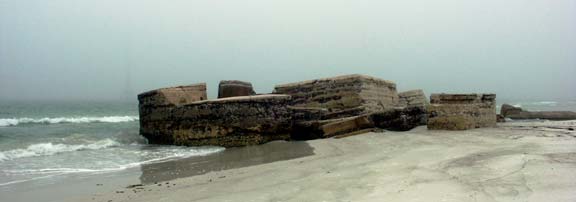
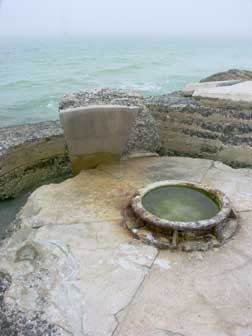
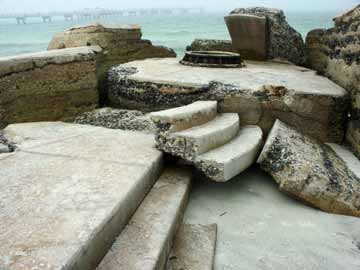
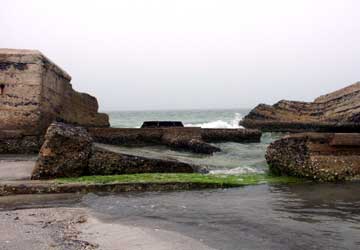
More views of Battery Bigelow, Fort Desoto
http://www.moosicmountainwild.com/coastalfortsfortressesfortifications/Fort%20DeSoto%20Florida.htm

